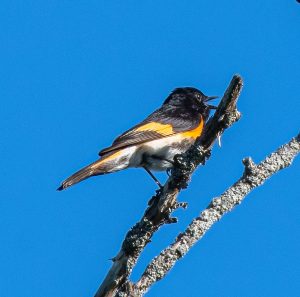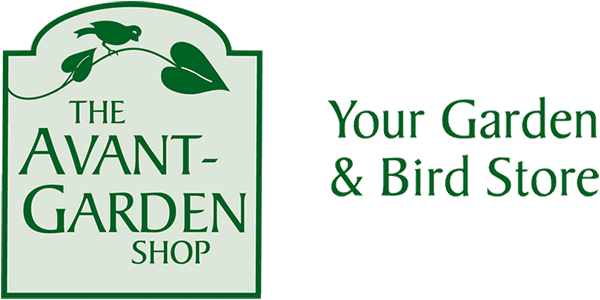 If there’s one thing that’s boomed during COVID, it’s birdwatching! With more time at home and less abroad, so many have turned their attention to the beauties they share their yards, gardens, and local parks with and are continually amazed by the variety of species so close to home.
If there’s one thing that’s boomed during COVID, it’s birdwatching! With more time at home and less abroad, so many have turned their attention to the beauties they share their yards, gardens, and local parks with and are continually amazed by the variety of species so close to home.
I (Brenda) saw my first American Redstart a month or so ago. What a beautiful bird! And much smaller than I thought! Redstarts are a type of warbler, a group of small insectivorous birds that known for their bright colouration and tendency to flit about rapidly in the foliage on their constant hunt for food. Just as there is a European Robin overseas, so, too, is there a Common Redstart, which explains the “American” at the beginning of both species’ names.
Mature male American Redstarts are small, black on the head, back, breast, wings, and tail, white in the belly, and have distinct orange patches in their wings and tails. Females are grey on the head, back, wings, and tail, white in the breast and belly, and have yellow where mature males are orange. In most warbler species, first-year birds (those who hatched the previous summer) look like adults, but it takes male American Redstarts 2 years to develop full adult plumage, so first-year males look very similar to females. There are subtle difference in the appearances of females and first-year males, but the surest way to tell them apart is to listen: if it’s singing, it’s a male.
As is true of most insectivorous birds, American Redstarts migrate south, spending their winters in the Dominican Republic, returning in the spring to nest in patches that have a lot of saplings. Their nests are tightly woven cups, often in the lowest crotch of the tree. Least Flycatchers use similar high-sapling-density areas for breeding, and when the two species co-occur, redstarts often outcompete the flycatchers, forcing them to relocate.
– – –
Another species that many have seen plenty of this year, but less so recently, is the Ruby-throated Hummingbird, the only hummer to breed east of the Rockies. These little gems graced so many feeders early in the season but have been far less frequent visitors of-late. There are a few possible reasons for this. First, hummingbirds rely on nectar to survive, and feeders offer that early in the season when there are so few flowers in bloom. There are flowers aplenty at this time of year, so the hummingbirds no longer need to rely on feeders for food. Second, breeding territories dissolve after young leave the nest and begin to move more freely, so the hummers that used your feeder may have simply moved on. Third, with the increase in the number of feeders out there this year, many species, not just hummingbirds, have access to far more food over a far larger area, so they may rely less on any single feeder for their energy supply.
– – –
What new birds have you encountered this year that you didn’t even know existed or that you’ve been waiting for years to see? We’d love to hear about them!
If you’re on Facebook and haven’t found it yet, look up Peterborough Ontario Birds, a bird group run by local Ornithologist, Andrew Jobes, that has over 1,700 members and remains a positive and supportive space for sharing sightings and knowledge and asking questions.
photo: (c) Maris Lubbock
